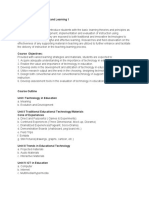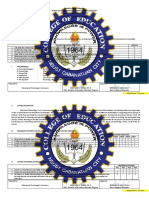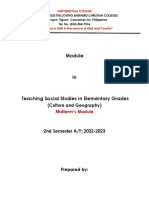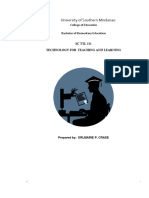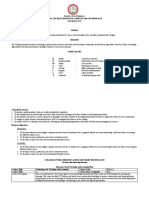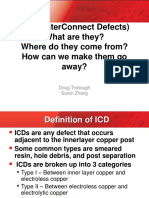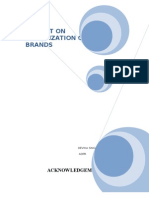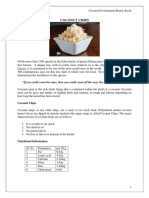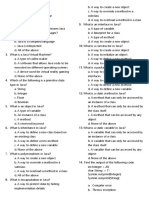0% found this document useful (0 votes)
100 views7 pagesEdTech Syllabus
This document outlines the course syllabus for an Educational Technology course offered at Dr. Carlos S. Lanting College. The course is designed to introduce students to learning theories and principles for designing, developing, implementing and evaluating instructional materials. Over the course of one semester (54 hours), students will learn about the history and concepts of educational technology, systematic approaches to teaching, and how to use and evaluate various instructional materials and media like film, video and television to enhance learning. Assessment methods include tests, oral recitations, critical thinking assessments, and reaction/feedback.
Uploaded by
Lawrence MendozaCopyright
© © All Rights Reserved
We take content rights seriously. If you suspect this is your content, claim it here.
Available Formats
Download as DOCX, PDF, TXT or read online on Scribd
0% found this document useful (0 votes)
100 views7 pagesEdTech Syllabus
This document outlines the course syllabus for an Educational Technology course offered at Dr. Carlos S. Lanting College. The course is designed to introduce students to learning theories and principles for designing, developing, implementing and evaluating instructional materials. Over the course of one semester (54 hours), students will learn about the history and concepts of educational technology, systematic approaches to teaching, and how to use and evaluate various instructional materials and media like film, video and television to enhance learning. Assessment methods include tests, oral recitations, critical thinking assessments, and reaction/feedback.
Uploaded by
Lawrence MendozaCopyright
© © All Rights Reserved
We take content rights seriously. If you suspect this is your content, claim it here.
Available Formats
Download as DOCX, PDF, TXT or read online on Scribd
/ 7



















